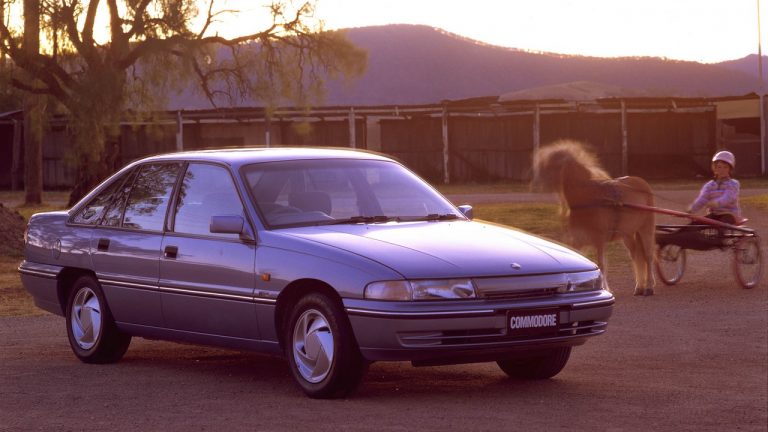Introduction
The L27 was a 3.8-litre pushrod V6 engine that was introduced in November 1990. Manufactured in Port Melbourne, Victoria, the L27 was an evolution of the LN3 engine and retained the key features of its predecessor. As such, it had 90-degree ‘V’ cylinder banks, 96.5 mm bores and an 86.3 mm stroke for a capacity of 3791 cc.
LN3 and L27 commonalities
Like the LN3, the L27 engine had a cast iron block, an offset crankshaft (supported by four main bearings), a sprocket and chain-driven camshaft within the crankcase and a balance shaft.
Both the LN3 and L27 engines had a cross-flow cylinder head made from cast-iron, a one-piece aluminium intake manifold, pushrod-operated overhead valves (OHV) with two valves per cylinder.
The engines also had electronic multi-point fuel injection, three ignition coils and, initially, a compression ratio of 8.5:1. The compression ratio, however, was increased to 9.0:1 for Holden’s VR range (described further, below).
L27 changes
Relative to the LN3, changes for the L27 engine included:
- A redesigned inlet manifold;
- Fitment of a bellmouth to the throttle body;
- Introduction of cast iron exhaust manifolds;
- Redesigned pistons;
- Revised coolant passages for the cylinder heads;
- Improved valve stem oil seals;
- Stainless steel welch plugs;
- A longer oil pressure regulator spring to increase oil pressure;
- Introduction of a timing cover shield to protect the crankshaft sensor;
- Introduction of a press-fit crankshaft pulley;
- A standardised crankshaft for models with automatic and manual transmissions; and,
- For the cooling system, a conventional filler neck and radiator cap for the radiator. The surge tank was also replaced by a reserve tank.
The L27 engine could be identified by the ‘EV6’ which was printed on its block.
VR changes
For Holden’s VR range, the L27 engine was upgraded with new pistons for a higher 9.0:1 compression ratio, more rigid connecting rods, reduced bearing clearances and roller valve rocker pivots – these changes were introduced for smoother running and improved fuel economy.
For the VR range, the 16k Electronic Control Units (ECUs) were replaced by 32k ECUs for models with manual transmissions and 64k ECUs for models with automatic transmissions; the latter was a full powertrain control module (PCM) that also controlled transmission behaviour. The new ECUs had two-way diagnostics and a revised closed-loop oxygen sensing system that enabled lean cruising.
[su_table responsive=”yes”]
| RPO | Engine | Peak power | Peak torque | Models | Years |
|---|---|---|---|---|---|
| L27 | 3.8-litre petrol V6 | 127kW at 4800rpm | 288Nm at 3200rpm | VN Commodore, VN Calais, VG Ute |
1990-91 |
| VP Commodore, VP Calais |
1991-93 | ||||
| VQ Statesman | 1991-94 | ||||
| VP Ute | 1992-93 | ||||
| 130kW at 4800rpm | 295Nm at 3200rpm | VR Commodore, VR Calais, VR Ute |
1993-95 | ||
| VR Statesman, VR Caprice |
1994-95 |
[/su_table]



